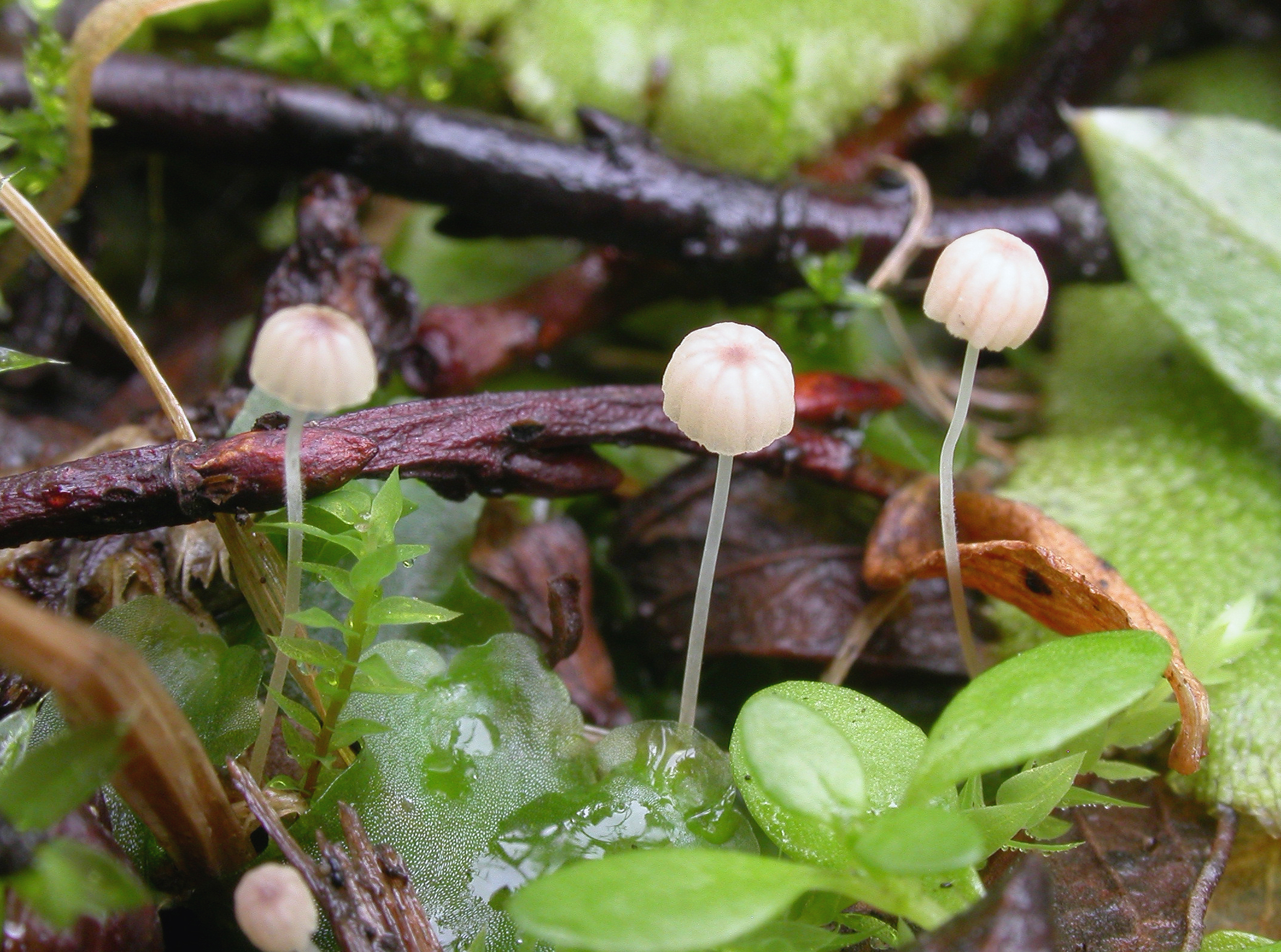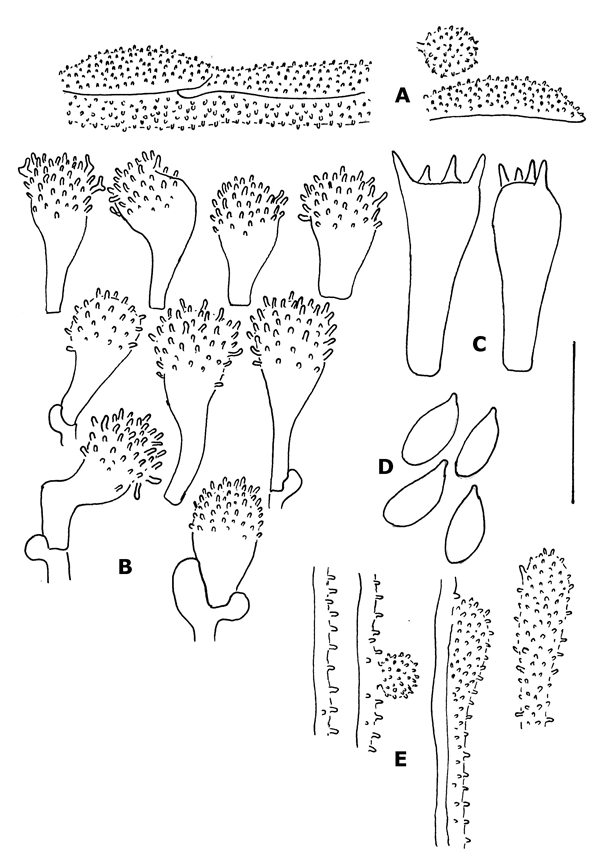Mycena exilis
Mycena exilis
Description
A. Hyphae of the pileipellis, B. Cheilocystidia, C. Basidia, D. Spores, E. Hyphae of the cortical layer of the stem.
Cap 1-3 mm across, hemispherical, bell-shaped, parabolical to applanate or slightly depressed, without or with a very small umbo, pruinose, glabrescent, sulcate, more or less translucent-striate, dark to pale pinkish brown to more pinkish, usually with darker centre. Gills 8 - 13 reaching the stem, edge convex, adnexed, not or rarely decurrent with a tooth, beige to whitish, sometimes with an incarnate tinge, the edge beige to whitish. Stem 10-25 x 0.2 mm, fragile, , equal to somewhat bulbous at the base, pruinose, glabrescent except for the base, which is pruinose to puberulous, pale brown when young, and then darker below, becoming entirely white or watery white, mostly insititious, but sometimes arising from a whorl of radiating, white hyphal cords. Odour none. Basidia 21-30 x 7-9 µm, clavate, 4-spored, with sterigmata up to 5 µm long. Spores 8.1-11.5 x 4.3-5.5 µm, Q = 1.7-2.4, Qav ˜ 2.1, narrowly ellipsoid, amyloid. Cheilocystidia 13-29 x 6-12 µm, forming a sterile band, clavate, obpyriform or somewhat more irregularly shaped, covered with regularly spaced warts and simple or occasionally branched, straight to somewhat curved, cylindrical excrescences, 0.5-3 x 0.5-1 µm. Pleurocystidia absent. Lamellar trama dextrinoid. Hyphae of the pileipellis 3- 9 µm wide, densely covered with narrow cylindrical excrescences, 0.5-1.5 x 0.5 µm; terminal cells globose to clavate. Hyphae of the cortical layer of the stem 1-5 µm wide, densely covered with short cylindrical, straight to slightly curved excrescences, 1-3 x 0.5-1 µm; caulocystidia numerous, especially near the base of the stem, 8-28 x 5-11 µm, clavate to subglobose, covered with cylindrical excrescences, 1-3.5 x 0.5 µm. Clamps present in all tissues.
Ecology and distribution
Gregarious on fallen, decaying leaves in thickets of Salix glauca and S. lapponum. Autumn. Known from alpine sites in South Norway.


